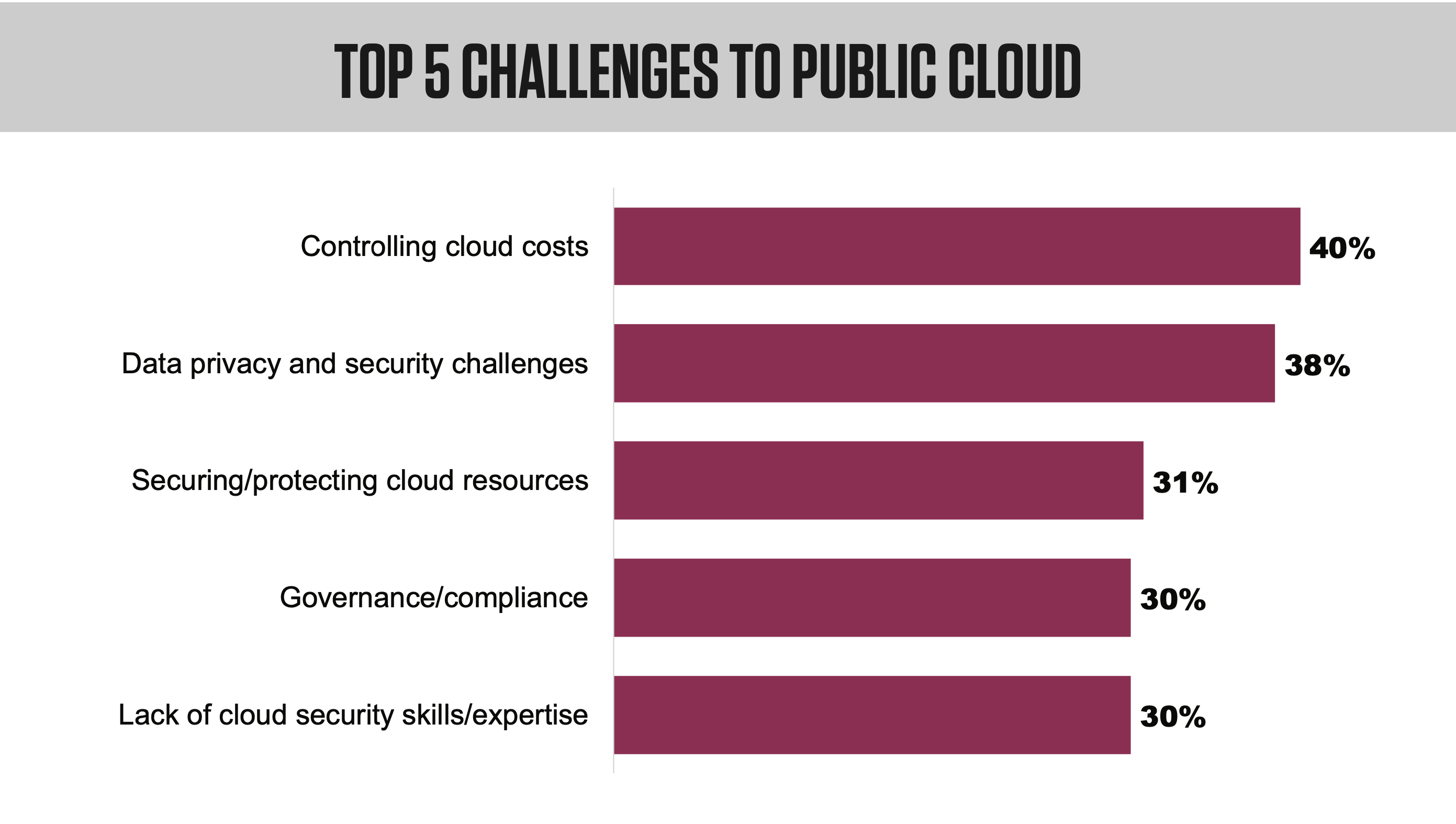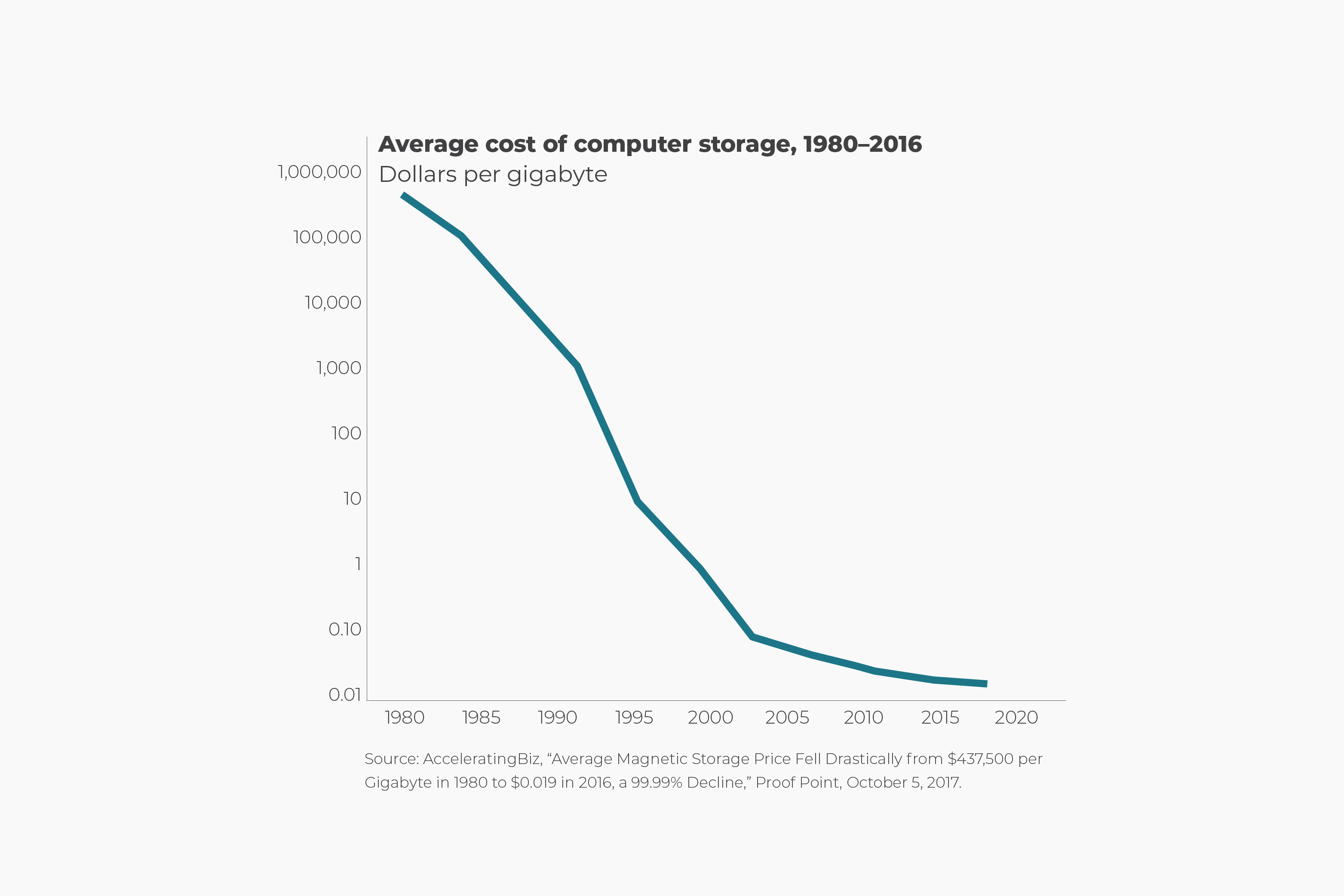Cloud Exodus

Companies across all industries began to exit the cloud last year and, despite widespread incredulity, have started a trend that is showing signs of accelerating this year. What's behind this great "public cloud repatriation" and why is a return to the Internet's origin story an inevitable opportunity to help clients be successful?
For the past decade, the public cloud drove digital transformation for organizations seeking to outsource their information technology to specialty third-parties. Amazon Web Services (AWS), for example, is among the largest of such providers that can handle the processing power for enterprise applications ("compute") as well as the corresponding data disk drive space ("storage"). In a sense, cloud computing represented a sound investment that was scalable and predictable for growing businesses.
But now we know it isn't.
What started at the end of the pandemic as a cost-saving trend has now ballooned into an spending-fueled existential crisis for the entire public cloud industry. Gartner's research vice president Sid Nag has recently observed that "CIOs are beyond the era of irrational exuberance of procuring cloud services" and instead need to be "thoughtful in their choice ... to drive specific, desired business and technilogy outcomes in their digital transformation journey."
The Cloud Cost Crisis
Businesses are now second-guessing the very executives who led them to the public cloud principally on account of just how expensive the public cloud is. Cloud computing has quickly become uncompetitive because of its runaway costs for two key reasons:
- Cloud customers don't (and often can't) optimize for the cloud.
In order to take advantage of the economies of scale that the public cloud provides, cloud users need to factor in the consumption-based pricing of cloud usage and they don't. Every cloud client ultimately accepts the ballooning and runaway costs of compute and storage as inevitable, because it's how the industry prices its lucrative margins. But when everyone was working from home and leveraging cloud resources for every imaginable workload, eye-watering cloud bills simultaneously sounded the alarms of enterprises; 40% of respondents in IDG's Cloud Computing Survey cited an urgent need to control costs, and nearly all cloud customers lamented they had no idea how to model their use or forecast their consumption needs.
Source: IDG Cloud Computing Survey 2020
Applications need to be purpose-built for the public cloud's specific architecture, but few (if any) of them ever really are. (And "cloud native" is now largely considered marketing nonsense, which even cloud vendors themselves won't use.) So what most companies encounter is software that works just as well as it did when it was served either on-premise or in a company-managed data center or colocation facility. The widespread practice of "lifting-and-shifting" locally-built applications into the public cloud has resulted in none of the initially promised benefits of cloud being realized: from auto-scaling, security, and storage management for efficient workloads. - The price (and complexity) of running your own systems has plunged.
Over the past 10 years, the prices of hard drive storage, networking hardware, computer processors, power, and all peripherals have dropped by over 90%, but cloud computing costs have stayed the same or in some cases even gone up. There are certainly specialty edge-cases where vast amounts of custom-managed hardware, such as artificial intelligence compute for training data models used in generative automation, are best handled initially in the public cloud. But in nearly all typical business use cases, there is almost-immediate return on investment for moving enterprise workloads to your own hardware.
Services have built a sales practice around "manufacturing the disease and selling the cure," as Technocery Principal Robert Gibbons observes. But the cloud industry took this to an insulting extreme and some executives became "merchants of complexity" scaring people with the imaginary bogeyman that having a server "connected to the internet" is a danger. But creating closed and isolated systems that can be kept secure and easily updated is now a trivial part of setting up your own server that it hardly requires specialized training, nevermind programming certifications. Open source containers, like Docker, benefit from the core principle of being hardened by a million eyeballs looking in the same place. As 37signals' CTO David Hansson concludes, we are now in "a golden age of secure, baseline computing. We should be celebrating!" The principal pain points that cloud computing address (cost and complexity) are no longer relevant.
The Turn
Information technology leaders, who once praised cloud computing, have been quick to turn against it in recent months. Cloud computing advocate David Linthicum says that the cloud "is no longer a slam dunk." Service Integrators and Managers (SIAMs), like Zeus Cloud's CEO Mark Grindey, are advising their customers that "now is the time to build an in-house, on-premise" framework for business computing. Hansson even published a magisterial Big Cloud Exit FAQ chronicling his company's intentional move (and dramatic savings) from the cloud's hyperscalers to the software developer's traditional infrastructure which he argues was as driven by core values as it was by cost. And even before these splashy episodes, Dropbox saved $75 million by building its own tech infrastructure. These are all hardly outliers; they represent a growing trend of cloud repatriation to on-premises that continues to accelerate, which providers are encouraged to embrace.
We can help. As businesses consider how to manage the change associated with exiting the cloud - and quickly realizing the return-on-investment in doing so - a strategic approach to planning the exit will minimize disruption while maximizing benefits. There are several phases to consider in your own Cloud Exodus:
- Hybridization
The term "hybrid cloud" is increasingly used to describe a business that utilizes a combination of both traditional on-premise technology solutions and cloud computing services. Hybridization is a likely phase in your organization's journey to savings and sensibility, and should prioritize the applications for quick wins. Enterprise servers that manage web hosting for internet and intranet sites, email exchanges with calendar and contact syncing, and even communication and collaboration productivity for video conferencing and telephony can all be quickly localized through primarily single-occurrence investments. Commercial services are also broadly portable and, when unbundled from public cloud providers, offer immediate savings without compromising on security. - Globalization
Disaster Recovery ("DR") and Content Delivery Networks ("CDN") ensure the sustainability and reachability of businesses' digital services to customers around the world. Layering industry expertise and leveraging proven experience, customers can benefit from a thoughtful and purposeful infrastructure design that prioritizes end-users and business outcomes. At the core of the unrealized public cloud promise of scale is a fallacy of its form: the largest cloud providers constitute single points of failure and more often than not experience dramatic outages that disable vast swaths of the internet. It is time to declare your independence and break free. - Specialization
There are undeniable specialty use cases for the cloud: isolated and time-limited, high-intensity workloads. Those should, as both Gartner and Forrester advise, be carefully considered with clearly defined business and technology outcomes driven by well understood use cases. Many of the failings of the public cloud's money pit stem from the Ron Popeil Showtime Rotisserie mindset of "set it and forget it" that accompanied poorly conceived or recklessly executed moves there in the first place. Carve out clear circumstances where the public cloud makes sense, from training your own artificial intelligence data models to building self-destructing test environments for rapid prototyping.
Like all undeniable trends, the incumbents are fighting tooth-and-nail to preserve the status quo. Amazon Web Services routinely publishes studies declaring that "cloud repatriation isn't a thing" and the other hyperscalers and their service providers, like Vercel, will dare you to connect to the internet like it's some sort of misadventure for the miseducated. Yet serious reflection of these arguments proves that they are fallacious and self-serving; at best, "you shouldn't leave the cloud" is a motte-and-bailey fallacy where the bailey is "the cloud is always cheaper" and the motte is "actually it's about agility." When a hyperscaler chooses a compelling argument because it's persuasive only to then retreat to a less compelling argument when it is assailed, you know it's an idea that is no longer innovative and it's time to leave it behind.
Cloud Governance
📄 One-Pager: Technocery Governance (.pdf)
Technocery's Transformations Services adopts a strategic and balanced approach to the Cloud, guiding organizations through the complexities of cloud adoption, ensuring alignment with business goals and regulatory mandates. Our Cloud Governance program focuses on cloud strategy and policy development (public, private, hybrid models), cost management and optimization (aligning spend with business outcomes), security and compliance in the cloud (industry regulations and data protection), and cloud repatriation strategy (transitioning from public cloud to hybrid and on-premises configurations).
